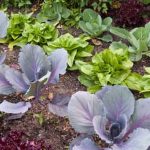Are you ready to become a savvy year-round vegetable gardener? In today’s fast-paced world, the ability to grow your own fresh and healthy produce throughout the year is not only satisfying but also essential for sustainable living. The practice of year-round vegetable gardening has become increasingly popular as people embrace the benefits of self-sufficiency and the joy of nurturing and enjoying homegrown fruits and vegetables.
By becoming a year-round vegetable gardener, you can enjoy a steady, fresh supply of nutritious produce while minimizing your environmental footprint. Whether you have a spacious backyard or just a sunny balcony, there are plenty of savvy gardening tips and techniques that can help you make the most of your space and climate.
From choosing the right vegetables to dealing with pests and diseases, this article will provide you with valuable insights on how to plan, set up, and maintain your very own year-round vegetable garden.
With the right knowledge and preparation, anyone can become a successful year-round vegetable gardener. This article will guide you through the process of planning your garden, from selecting the best location to preparing the soil and choosing suitable containers.
By embracing the sustainable practice of year-round vegetable gardening, you’ll not only be able to enjoy an abundant harvest but also contribute to a healthier planet. Get ready to discover the rewarding journey of becoming a year-round vegetable gardener.
Benefits of Year-Round Vegetable Gardening
Year-round vegetable gardening offers numerous benefits for savvy gardeners looking to cultivate fresh produce throughout the year. By extending the growing season, you can enjoy an abundant supply of homegrown vegetables and herbs no matter the season. In this section, we will explore some savvy gardening tips to help you make the most of year-round vegetable gardening.
Extended Harvest
One of the main benefits of year-round vegetable gardening is the ability to extend your harvest beyond traditional growing seasons. By carefully selecting a variety of cold-hardy vegetables and using season-extending techniques such as row covers, cold frames, and tunnels, you can continue to harvest fresh produce well into the fall and winter months. This ensures a constant supply of nutritious and delicious vegetables for your table.
Seasonal Variety
Year-round vegetable gardening allows you to experiment with a wider variety of vegetables throughout the year. In addition to cold-hardy options, you can also grow heat-tolerant varieties during the warmer months. This seasonal diversity not only adds excitement to your garden but also provides a wider range of flavors and nutrients in your diet.
Sustainability and Self-Sufficiency
Embracing year-round vegetable gardening aligns with sustainable living practices by reducing reliance on store-bought produce that has been shipped long distances. Growing your own vegetables also reduces exposure to potentially harmful chemicals used in commercial agriculture, promoting a healthier lifestyle for you and your family.
Additionally, cultivating a year-round garden fosters self-sufficiency by nurturing valuable skills in growing food independently. The rewards are not just limited to bountiful harvests but also include the satisfaction of knowing where your food comes from and how it was grown.
Planning Your Year-Round Garden
When it comes to year-round vegetable gardening, one of the most crucial aspects is choosing the right vegetables to grow. The key to a successful year-round garden lies in selecting a variety of vegetables that thrive in different seasons, ensuring a constant supply of fresh produce throughout the year. By carefully planning and diversifying your vegetable selection, you can enjoy a bountiful harvest no matter the season.
To begin planning your year-round garden, consider the climate and growing conditions specific to your region. Certain vegetables are better suited for colder temperatures, while others thrive in warmer climates. For example, root vegetables such as carrots and beets are ideal for cooler seasons, while tomatoes and peppers are best grown during the warmer months. It’s important to research which vegetables are well-suited for your specific climate and plan your garden accordingly.
In addition to considering seasonal variations, it’s also essential to choose a mix of fast-maturing and slow-maturing vegetables. Fast-maturing crops such as lettuce and radishes will provide quick yields, allowing you to enjoy an early harvest while waiting for slower-growing vegetables like pumpkins or winter squashes to fully mature. This strategic planning will ensure a continuous rotation of crops and a steady supply of fresh vegetables throughout the year.
| Vegetable | Ideal Season |
|---|---|
| Lettuce | Cooler seasons |
| Tomatoes | Warmer months |
Setting Up Your Garden
When setting up your year-round vegetable garden, it’s crucial to consider the location, soil, and containers to ensure a successful and productive garden. Here are some tips to help you get started:
Choosing the right location for your garden is essential for the success of your year-round vegetable gardening. Consider a spot with ample sunlight, good drainage, and protection from harsh winds. Raised beds or container gardens are excellent options if you have limited space or poor soil quality.
Once you’ve chosen the perfect location, it’s time to prepare the soil. Whether you’re planting in the ground or in containers, ensure that the soil is rich in organic matter and well-draining. Consider using compost or aged manure to improve soil fertility and structure.
In addition to choosing the right location and preparing the soil, selecting appropriate containers is crucial for successful year-round vegetable gardening. Opt for containers that are large enough to accommodate the mature size of your chosen vegetables and have proper drainage holes. Additionally, consider using self-watering containers or raised beds for added convenience and better moisture control.
By following these tips for setting up your garden – including choosing the right location, preparing the soil, and selecting appropriate containers – you will be well on your way to becoming a savvy gardener who can enjoy a thriving year-round vegetable garden.
Maintenance Tips for Year-Round Vegetable Gardening
Regular Watering and Fertilizing
One of the most important maintenance tasks for year-round vegetable gardening is ensuring that your plants receive adequate water and nutrients. Different vegetables have different watering needs, so it’s important to research the specific requirements of the vegetables you’re growing.
In general, it’s best to water in the morning to reduce the risk of fungal diseases, and to water at the base of the plant to avoid wetting the foliage. Additionally, fertilizing your plants regularly with a balanced fertilizer will help promote healthy growth and bountiful harvests.
Weeding and Mulching
Keeping your garden free from weeds is essential for the health of your vegetable plants. Weeds compete with your vegetables for water, nutrients, and sunlight, so regular weeding is crucial. Mulching around your plants can also help suppress weeds, conserve soil moisture, and regulate soil temperature. Organic mulches such as straw, shredded leaves, or grass clippings can also contribute valuable organic matter to your soil as they break down.
Pruning and Training
Some vegetables benefit from pruning or training to maximize their productivity. For example, indeterminate tomato varieties can be pruned to remove suckers and excess foliage, allowing the plant to focus its energy on fruit production. Similarly, vining crops like cucumbers or squash may benefit from being trained onto trellises or other supports to save space and improve air circulation. Taking the time to prune and train your plants can lead to healthier crops and easier maintenance throughout the growing season.
By following these maintenance tips for year-round vegetable gardening savvy garden enthusiasts can ensure that their garden remains productive and healthy throughout the year. Regular attention to watering, weeding, fertilizing, mulching, pruning, and training will result in a bountiful harvest of fresh produce for home enjoyment.
Dealing With Pests and Diseases in Your Year-Round Garden
One effective strategy for dealing with pests and diseases in your year-round garden is to practice crop rotation. This involves planting different types of vegetables in different areas of your garden each season. By doing so, you can disrupt the life cycles of pests and prevent the buildup of soil-borne diseases that target specific plant families. Additionally, using companion planting techniques can help deter pests and attract beneficial insects that will naturally control pest populations.
Another important aspect of pest and disease management in a year-round vegetable garden is to regularly monitor your plants for any signs of trouble. Inspecting leaves, stems, and fruits for unusual marks or discoloration can help you catch potential issues early on before they have a chance to spread. It’s also crucial to remove any affected plants or plant parts promptly to prevent the spread of diseases.
In addition to practicing preventative measures, it’s also helpful to have some natural remedies on hand to address pest and disease problems if they do arise. For example, using homemade insecticidal soap or neem oil sprays can effectively control common garden pests like aphids, mites, and whiteflies without harming beneficial insects or the environment.
| Aspect | Information |
|---|---|
| Crop Rotation | Planting different types of vegetables in different areas each season |
| Companion Planting | Deter pests and attract beneficial insects |
| Monitoring Plants | Regularly inspect leaves, stems, and fruits for signs of trouble |
| Natural Remedies |
Harvesting and Enjoying the Fruits of Your Year-Round Vegetable Garden
When it comes to year-round vegetable gardening, the ultimate goal is, of course, harvesting and enjoying the fruits of your labor. Whether you have a traditional garden plot, raised beds, or containers, seeing your vegetables thrive and then being able to eat them is incredibly satisfying. Here are some tips for making the most of your year-round vegetable garden harvest:
Utilize a Variety of Vegetables
One of the great things about year-round vegetable gardening is that you can enjoy a wide range of fresh produce throughout the seasons. From leafy greens and root vegetables in the cooler months to tomatoes and peppers in the summer, there’s no shortage of options. By choosing a diverse array of vegetables to grow, you can ensure a bountiful harvest throughout the year.
Preserve Your Harvest
To make the most of your year-round vegetable garden, consider preserving some of your harvest for later use. This can include techniques such as canning, pickling, freezing, or even drying certain fruits and vegetables. Not only does this allow you to enjoy your home-grown produce long after it’s been harvested, but it also helps reduce food waste.
Share Your Bounty
If you find yourself with an abundance of fresh vegetables from your year-round garden, consider sharing them with friends, family, or even local food banks. This not only spreads the joy of homegrown produce but also fosters a sense of community around your gardening efforts.
By following these tips and fully embracing the practice of year-round vegetable gardening savvy garden enthusiasts can truly make the most out of their hard work and dedication to sustainable living.
Conclusion
In conclusion, year-round vegetable gardening is a sustainable and rewarding practice that offers numerous benefits for savvy gardeners. By embracing this approach to gardening, individuals can enjoy a constant supply of fresh, organic produce while minimizing their environmental impact. With the right planning, setup, and maintenance, it is possible to create a thriving year-round garden that provides an abundance of healthy vegetables throughout the seasons.
One of the key advantages of year-round vegetable gardening is the ability to cultivate a diverse range of crops that are well-suited to different seasons. This not only ensures a varied and nutritious diet but also allows gardeners to explore new flavors and culinary possibilities. Furthermore, by growing your own vegetables year-round, you can reduce your reliance on store-bought produce, thereby contributing to a more sustainable food system.
While year-round vegetable gardening requires careful planning and consistent maintenance, the rewards are well worth the effort. From selecting the right vegetables for each season to effectively managing pests and diseases, there are numerous opportunities for savvy gardeners to hone their skills and expand their knowledge. Ultimately, by committing to year-round vegetable gardening, individuals can take satisfaction in knowing that they are playing a part in promoting healthier eating habits and nurturing the environment through sustainable agricultural practices.

If you’re looking to get into vegetable gardening, or are just looking for some tips on how to make your current garden better, then you’ve come to the right place! My name is Ethel and I have been gardening for years. In this blog, I’m going to share with you some of my best tips on how to create a successful vegetable garden.





